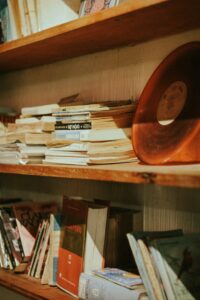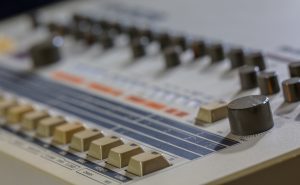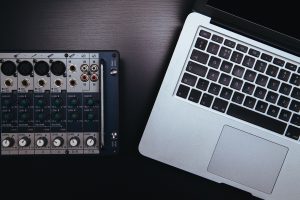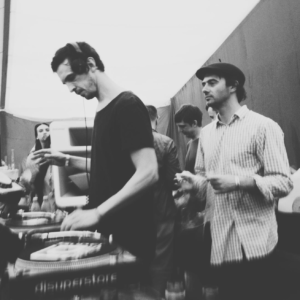Minimalism in Music Production: Drawing Inspiration from Arthur Russell, Brian Eno, and Terry Riley
Minimalism is an approach that emphasizes simplicity and a reduction in the number of musical elements. This approach can be applied to many genres of music, but it has been particularly influential in electronic music, where technology and sound design can lead to overwhelming complexity. In the end of the 90’s, minimal techno had a huge bloom in popularity. It was in reaction of maximal music such as trance and hard techno. This is when I started making music because I felt a strong connection with minimalist music.
In this article, we will explore how minimalism has been used in music production, drawing inspiration from three influential artists: Arthur Russell, Brian Eno, and Terry Riley.
The Power of Minimalism
The essence of minimalism in music production lies in the ability to create a focused and spacious sonic environment. By using fewer sounds, producers can create a clear and uncluttered atmosphere that allows the listener to focus on the details of each individual sound. This approach works well in electronic music, where sound design and texture are often the main focus.
Modular and eurorack synthesizers, in particular, are great tools for exploring minimalism in music production. With their limited number of modules and limited space (but also their costs!), these instruments force the producer to be creative with fewer resources. This constraint can be a great source of inspiration, leading to innovative and original compositions.
One of the most important differences between now and the late 90’s is the accessibility to music production tools. Back then, you’d be caught to use only a few things you’d have, such as a drum machine and a sampler. Now we have so many things that it is hard to focus on what to pick. Minimalism starts with fully embracing limitations one has to impose to themselves.
Simple, Constantly Evolving Phrases
One of the key challenges in minimalist music production is to create variation and development with limited musical material. A useful exercise for developing this skill is to focus on creating simple but constantly evolving phrases. These phrases can be created using a limited number of notes, rhythmic patterns, or sound textures.
I also like to think about picking up to 4 different sounds i love and will try to make phrasing out of them.
Arthur Russell was a master of creating evolving phrases in his music. His use of repetition and subtle variation created a hypnotic and mesmerizing effect. In his track “Lucky Cloud,” for example, he uses a simple four-note bassline that repeats throughout the track, but he gradually adds layers of percussion, synths, and vocals, creating a rich and complex texture. He would rely on reverb, delays and use of panning to create all the tension and variations necessary to create engagement.
Brian Eno is another artist who has explored the possibilities of minimalist music. His approach is often characterized by the use of ambient textures and drones, creating a meditative and introspective atmosphere. In his album “Music for Airports,” he uses a limited number of simple chords and melodic fragments, layering them to create a constantly evolving soundscape. He is known for developing generative tools to create his music. He will let the machines come up with ideas and then will cherry pick the moments he loves.
Terry Riley is a pioneer of minimalist music, known for his innovative use of repetition and improvisation. His piece “In C” is a landmark work of minimalist music, consisting of 53 short phrases that can be repeated and combined in different ways, creating a virtually infinite number of variations.
Exercises for Minimalist Music Production
Here are three exercises inspired by Arthur Russell, Brian Eno, and Terry Riley to help you explore minimalism in your music production:
- Arthur Russell Exercise: Create a simple four-note bassline and add layers of percussion, synths, and vocals to create a rich and complex texture. Focus on reverb and delays, panning. Challenge: use your voice (yes, do it).
- Brian Eno Exercise: Create an ambient soundscape using a limited number of chords and melodic fragments, layering them to create a constantly evolving texture. You may try to generative melodies scaled to a key and then keep what you love. Challenge: record 30 minutes of music, unedited.
- Terry Riley Exercise: Create a short phrase consisting of a few notes or a simple rhythm. Repeat and vary this phrase, gradually adding layers of texture and improvisation to create a complex and evolving composition. Challenge: Face ultimate repetition and stick to it.
Tools you can use:
Synths I love: I seem to always come back to Pigments as one of my favorites. It features multiple possible options when it comes to modulation and it makes it a very versatile tool. What I love is to start from a preset (it has a shop in the plugin!) and then tweak it to taste. The ones that are included are lovely starting canvas that are in tune with current genres. Quanta 2 and Diva would also be great here, for the quality of their sound.
When it comes to reverbs and delays: I’m a big fan of anything that comes from Valhalla’s effects. They are perfectly priced and the quality is trusted by top producers for a reason, because they sound amazing. Otherwise, if you want something solid, you could consider Fabfilter Reverb and Neoverb for a cheap option. Both are often used on my side.
Generative tools are numerous in the Ableton live environment. You could use simple max patches like Snake or Rozzer and have some LFOs mapping that make them evolve through time. Otherwise, the good old Riffer comes handy. I would recommend Alexkid VST Seqund that really wonderful as well. Otherwise, dive in VCV.
Conclusion
Minimalism in music production is a powerful tool for creating focused and spacious sonic environments. By using a limited number of sounds and musical elements, producers can create innovative and original compositions. Drawing inspiration from Arthur Russell, Brian Eno, and Terry Riley, we can explore the possibilities of minimalist music and develop our skills in creating simple but constantly evolving musical phrases.




 Filtering ideas into a concept
Filtering ideas into a concept
 Many DAWs can be setup to load a template as an initial starting point. Reason will propose a pre-made environment, and Studio One will propose if you’d like to setup a project for mixing to speed up your getting started time. Ableton Live doesn’t have that feature by default, but you can easily change that to open a custom startup project.
Many DAWs can be setup to load a template as an initial starting point. Reason will propose a pre-made environment, and Studio One will propose if you’d like to setup a project for mixing to speed up your getting started time. Ableton Live doesn’t have that feature by default, but you can easily change that to open a custom startup project.



